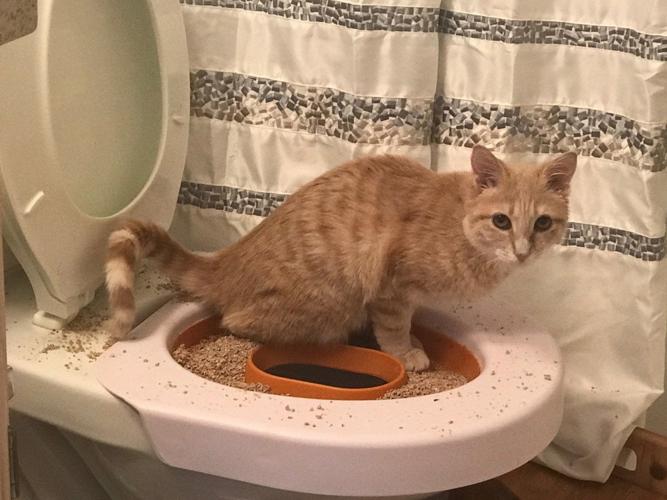Why Flushing Cat Poop Down Your Toilet May Cause Problems - Recommendations for Proper Handling
Why Flushing Cat Poop Down Your Toilet May Cause Problems - Recommendations for Proper Handling
Blog Article
Do you find yourself trying to find ideas around Don’t flush cat feces down the toilet?

Intro
As cat owners, it's important to be mindful of just how we throw away our feline friends' waste. While it may seem practical to purge cat poop down the bathroom, this practice can have detrimental effects for both the setting and human health and wellness.
Alternatives to Flushing
Luckily, there are more secure and extra responsible ways to dispose of pet cat poop. Take into consideration the complying with alternatives:
1. Scoop and Dispose in Trash
One of the most typical technique of getting rid of cat poop is to scoop it right into a naturally degradable bag and toss it in the garbage. Make sure to make use of a devoted trash scoop and take care of the waste promptly.
2. Usage Biodegradable Litter
Go with biodegradable cat litter made from materials such as corn or wheat. These litters are environmentally friendly and can be safely gotten rid of in the trash.
3. Hide in the Yard
If you have a backyard, take into consideration burying cat waste in a designated location far from vegetable yards and water sources. Be sure to dig deep adequate to avoid contamination of groundwater.
4. Install a Pet Waste Disposal System
Buy an animal garbage disposal system particularly made for pet cat waste. These systems utilize enzymes to break down the waste, lowering smell and environmental influence.
Health and wellness Risks
In addition to environmental problems, flushing cat waste can likewise pose health and wellness risks to human beings. Cat feces might have Toxoplasma gondii, a parasite that can trigger toxoplasmosis-- a possibly severe health problem, specifically for pregnant women and individuals with weakened immune systems.
Environmental Impact
Purging pet cat poop introduces damaging microorganisms and parasites into the water, posturing a considerable danger to aquatic communities. These pollutants can negatively affect aquatic life and compromise water quality.
Conclusion
Liable family pet ownership prolongs past offering food and sanctuary-- it likewise entails proper waste administration. By avoiding purging pet cat poop down the commode and opting for alternative disposal approaches, we can lessen our environmental impact and secure human health.
Why Can’t I Flush Cat Poop?
It Spreads a Parasite
Cats are frequently infected with a parasite called toxoplasma gondii. The parasite causes an infection called toxoplasmosis. It is usually harmless to cats. The parasite only uses cat poop as a host for its eggs. Otherwise, the cat’s immune system usually keeps the infection at low enough levels to maintain its own health. But it does not stop the develop of eggs. These eggs are tiny and surprisingly tough. They may survive for a year before they begin to grow. But that’s the problem.
Our wastewater system is not designed to deal with toxoplasmosis eggs. Instead, most eggs will flush from your toilet into sewers and wastewater management plants. After the sewage is treated for many other harmful things in it, it is typically released into local rivers, lakes, or oceans. Here, the toxoplasmosis eggs can find new hosts, including starfish, crabs, otters, and many other wildlife. For many, this is a significant risk to their health. Toxoplasmosis can also end up infecting water sources that are important for agriculture, which means our deer, pigs, and sheep can get infected too.
Is There Risk to Humans?
There can be a risk to human life from flushing cat poop down the toilet. If you do so, the parasites from your cat’s poop can end up in shellfish, game animals, or livestock. If this meat is then served raw or undercooked, the people who eat it can get sick.
In fact, according to the CDC, 40 million people in the United States are infected with toxoplasma gondii. They get it from exposure to infected seafood, or from some kind of cat poop contamination, like drinking from a stream that is contaminated or touching anything that has come into contact with cat poop. That includes just cleaning a cat litter box.
Most people who get infected with these parasites will not develop any symptoms. However, for pregnant women or for those with compromised immune systems, the parasite can cause severe health problems.
How to Handle Cat Poop
The best way to handle cat poop is actually to clean the box more often. The eggs that the parasite sheds will not become active until one to five days after the cat poops. That means that if you clean daily, you’re much less likely to come into direct contact with infectious eggs.
That said, always dispose of cat poop in the garbage and not down the toilet. Wash your hands before and after you clean the litter box, and bring the bag of poop right outside to your garbage bins.
https://trenchlesssolutionsusa.com/why-cant-i-flush-cat-poop/

We were introduced to that article on Don’t flush cat feces down the toilet through someone on another blog. In case you liked our article kindly be sure to share it. Thanks a lot for taking the time to read it.
Schedule A Service Report this page